Australia Post
Nominate to Collect
A Hack Day submission based around implementing machine-learning and algorithms. This project utilised facial-recognition to help simplify the collection of missed parcel deliveries. We had 48 hours to validate the problem, find and illustrate the solution, and create demonstration videos to market the project.
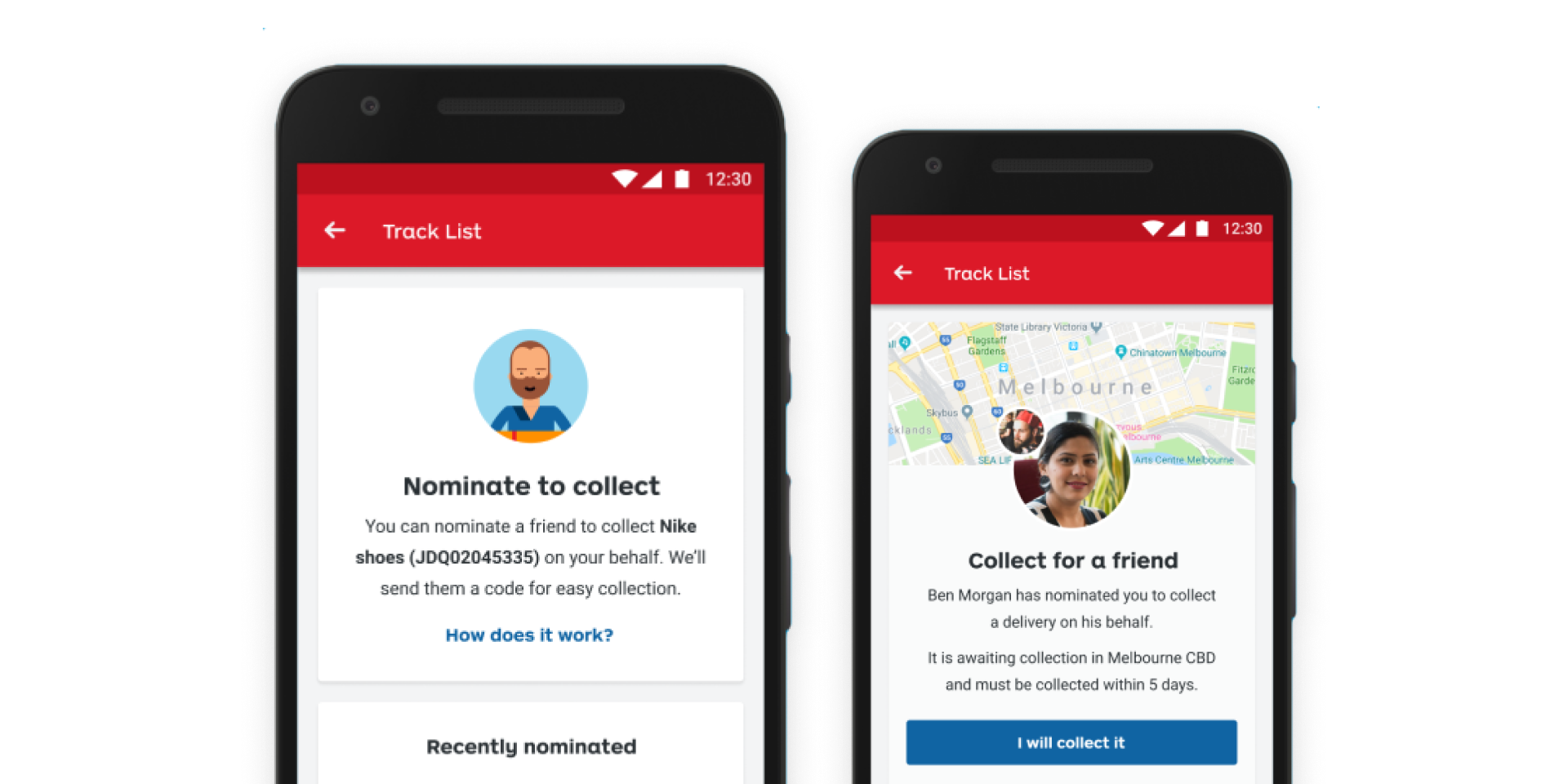
Role
Snr. Product DesignerTimeline
2 days (Nov 2018)Team
- Business Analyst
- Android Developer
Responsibilities
- User Research
- User Interface
- Prototyping
The UX problem
On failed delivery, the driver will leave a physical card detailing when and where the parcel can be collected, and offers delegated collection via signature. If customers wish to delegate collection, they must first physically locate the card before signing it and giving it to the delegate. We wanted to investigate whether this process could be entirely digital.
Research
Quantitative ValidationQualitative Validation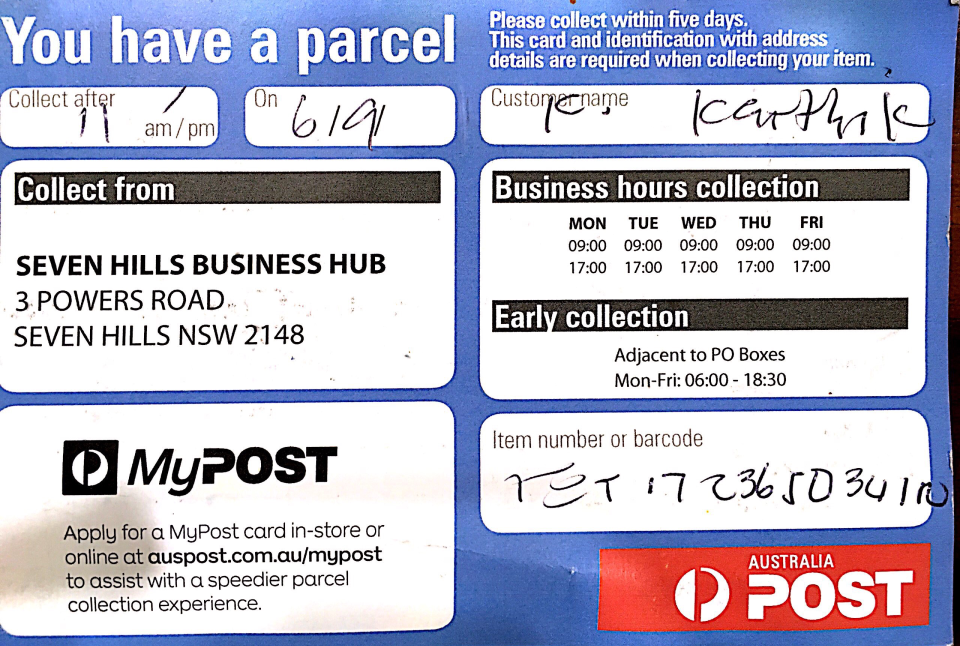
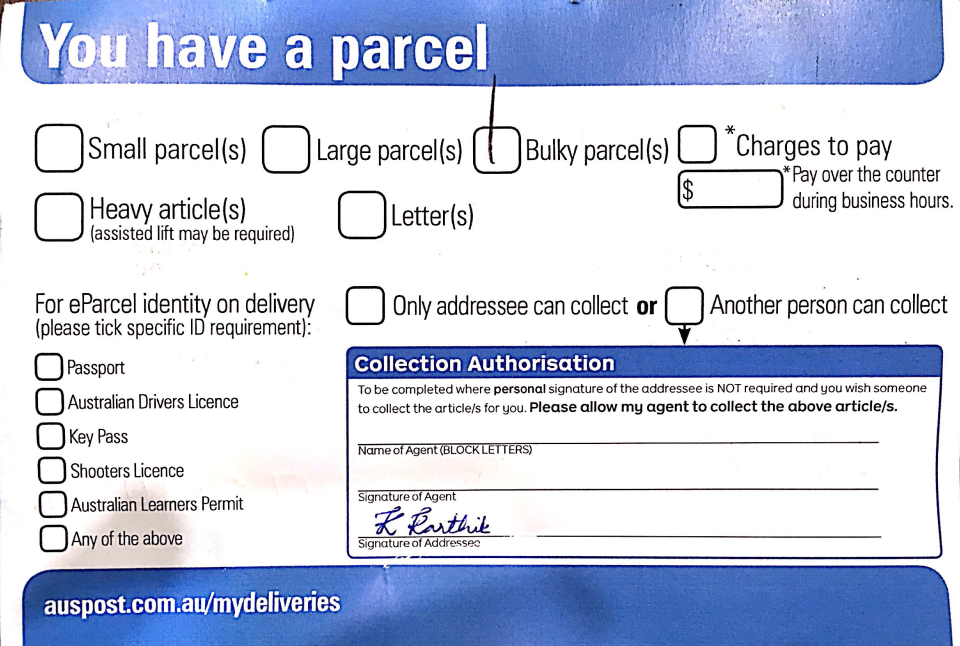
Quantitative insights
Missed deliveries are highly correlated with negative NPS ratings, so anything that can be done to improve the missed delivery experience has both customer and business value.
I wished to gain a more nuanced understanding of the scale of the carding problem. Visitor analytics revealed page visits to the carding help page was trending upwards. Page visitation increased from 19 million visits (0.07% of total visits) in 2017 to 36 million (0.13% of total visits) in 2018. Using page visits as a proxy indicated that this was a growing problem.
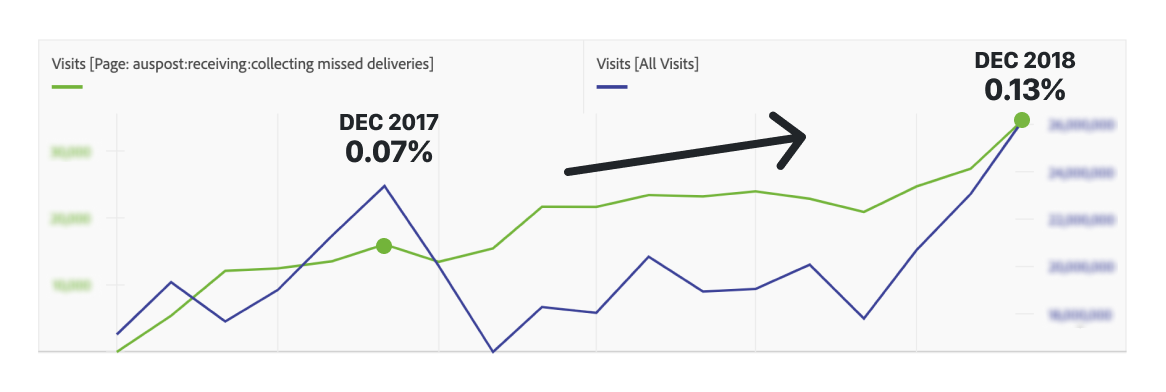
Qualitative insights
Once I had validated the existence of the problem via analytics, I looked for feedback that would provide qualitative insights. A keyword search for general carding feedback confirmed that customers were typically unhappy upon receiving the missed delivery card. Narrower keywords (e.g. “husband”, “wife”) revealed feedback confirming difficulties in delegating authority for collection.
I lost my pick up card and my local post office is refusing to let me pick up my parcel without it. I am assuming they will send out another pick up card but this is frustratingly pedantic as they know me.
My husband showed the counter lady my driver's license with matching information (full name and address matched with info on parcel) but the post office won't give us the parcel.
I lost my pick up card and my local post office is refusing to let me pick up my parcel without it. I am assuming they will send out another pick up card but this is frustratingly pedantic as they know me and I have used that post office for 6 years.
My post office won't give us the parcel. My husband showed the counter lady my driver's license with matching information (full name and address matched with info on parcel).
Finding a solution
I synthesised the feedback in the form of a customer journey map. I noted key opportunities in the ‘planning’ and ‘collection’ stages:
- Digitising the delivery card (more difficult to lose a digital card)
- Improving communication between parties
- Simplifying identification
- Improving retail experience
Activities
Customer Journey MapUser FlowsPrototype
Deciding on features
Working with the team, we devised app features that would capitalise on opportunities and alleviate pain points identified in the customer journey maps. These were sketched out using user flows.
Strengths 👍
- Carding issue attracts negative media attention
- Customer no longer relies on finding physical card
- Letting store know of delegation of authority to collect can expedite collection process
- Use of facial-recognition can ensure clear photo is provided to the store
Weaknesses 👎
- Will only work for deliveries that are matched to registered user
- Requires both parties to be logged-in to app
- Using SMS may incur high costs
- Photo provided by customer may not match nominees offical ID

Strengths and weaknesses
We quickly met with the parcel collection manager to provide a third-party view on the project’s strength and weaknesses. Following this meeting we culled features, such as automatic SMS, due to operational or commercial constraints. In place of SMS, we decided to instead use push notifications to notify app users and introduce self-share via SMS.
Strengths 👍
- Carding issue attracts negative media attention
- Customer no longer relies on finding physical card
- Letting store know of delegation of authority to collect can expedite collection process
- Use of facial-recognition can ensure clear photo is provided to the store
Weaknesses 👎
- Will only work for deliveries that are matched to registered user
- Requires both parties to be logged-in to app
- Using SMS may incur high costs
- Photo provided by customer may not match nominees offical ID
Strengths 👍
- Reduce carding issues which attract negative media attention
- Customer no longer relies on finding physical card
- Letting store know of delegation of authority to collect can expedite collection process
- Use of facial-recognition can ensure clear photo is provided to the store
Weaknesses 👎
- Reliant on digital matching to customer which is low
- Using SMS may incur high costs
- Both parties' apps must be logged-in for push notifications
- Photo provided by customer may not match nominee's offical ID
Strengths 👍
- Carding issue attracts negative media attention
- Customer no longer relies on finding physical card
- Letting store know of delegation of authority to collect can expedite collection process
- Use of facial-recognition can ensure clear photo is provided to the store
Weaknesses 👎
- Will only work for deliveries that are matched to registered user
- Requires both parties to be logged-in to app
- Using SMS may incur high costs
- Photo provided by customer may not match nominees offical ID
Prototyping the solution
I used the design software Figma to rapidly prototype the solution. These prototypes assisted the devs in quickly building the primary user flow which was used in the Hack Day demonstration. Secondary flows were used to further promote the project.
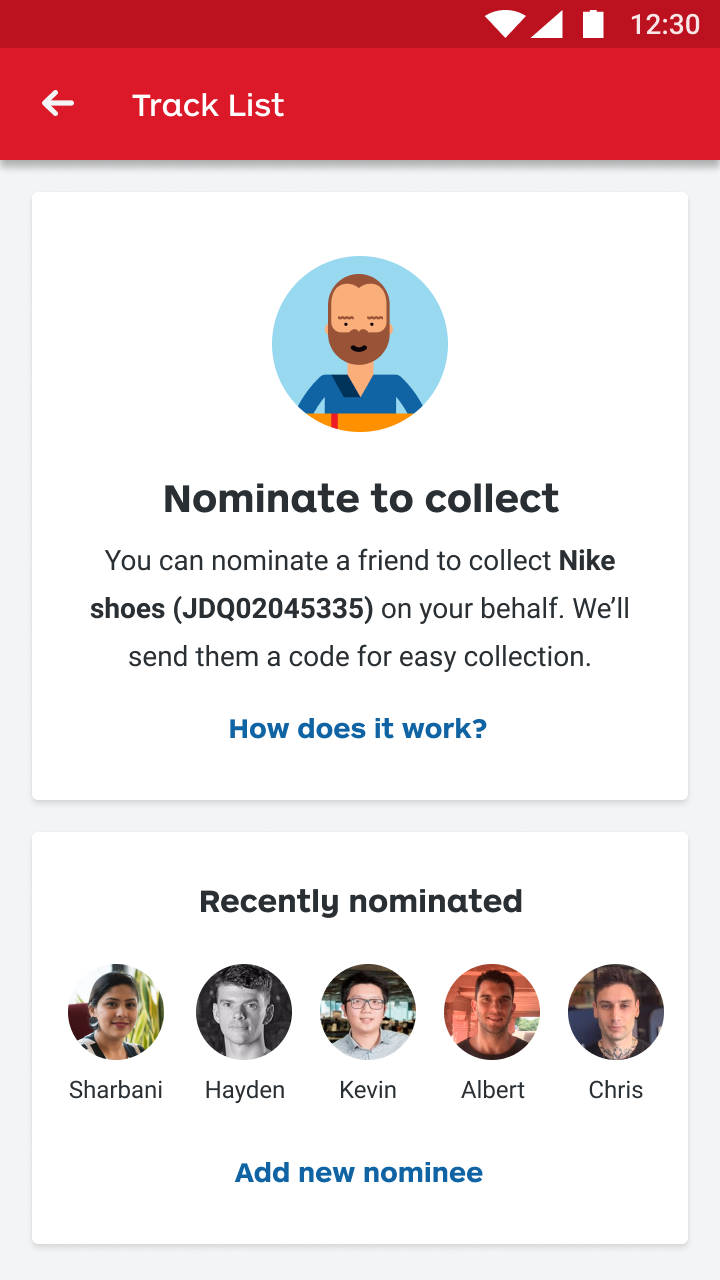
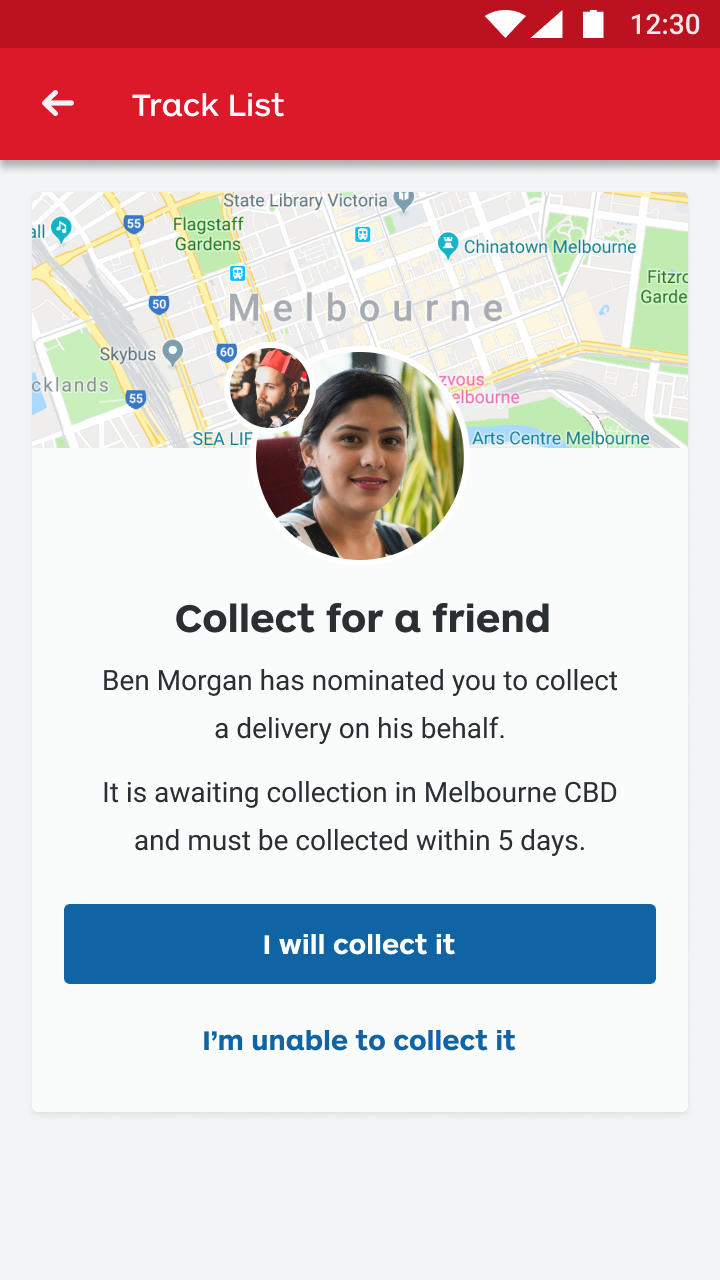
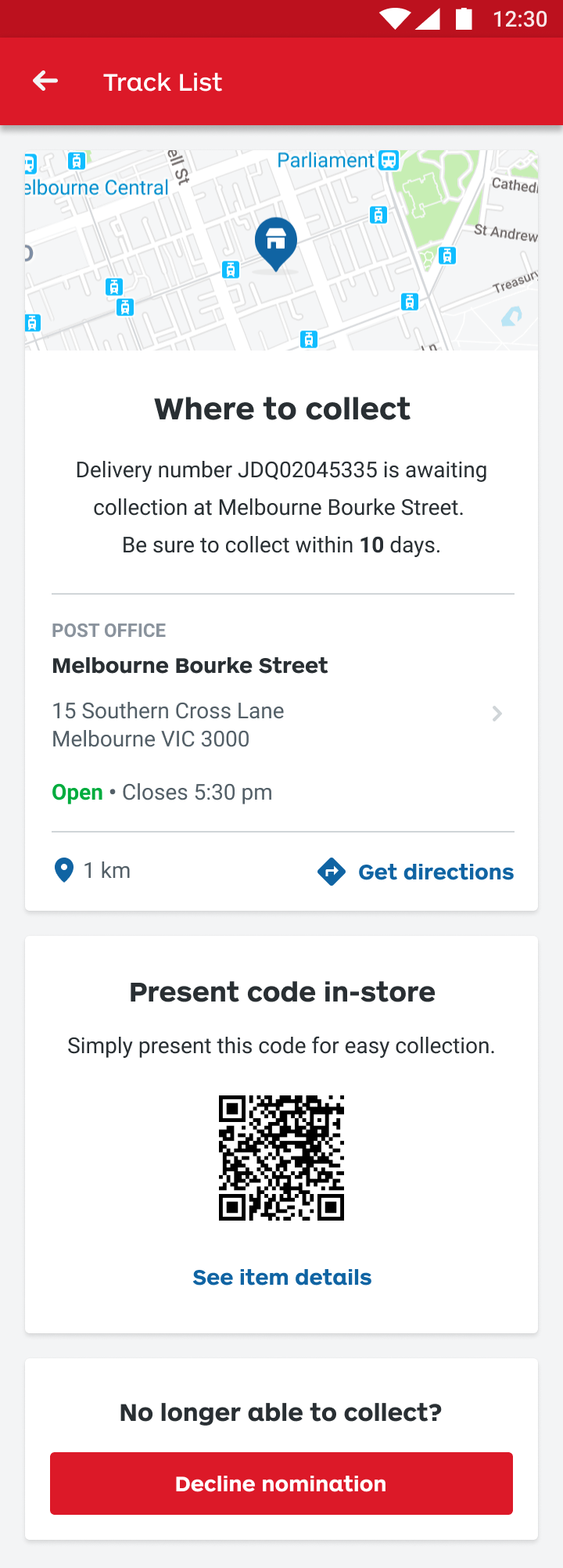
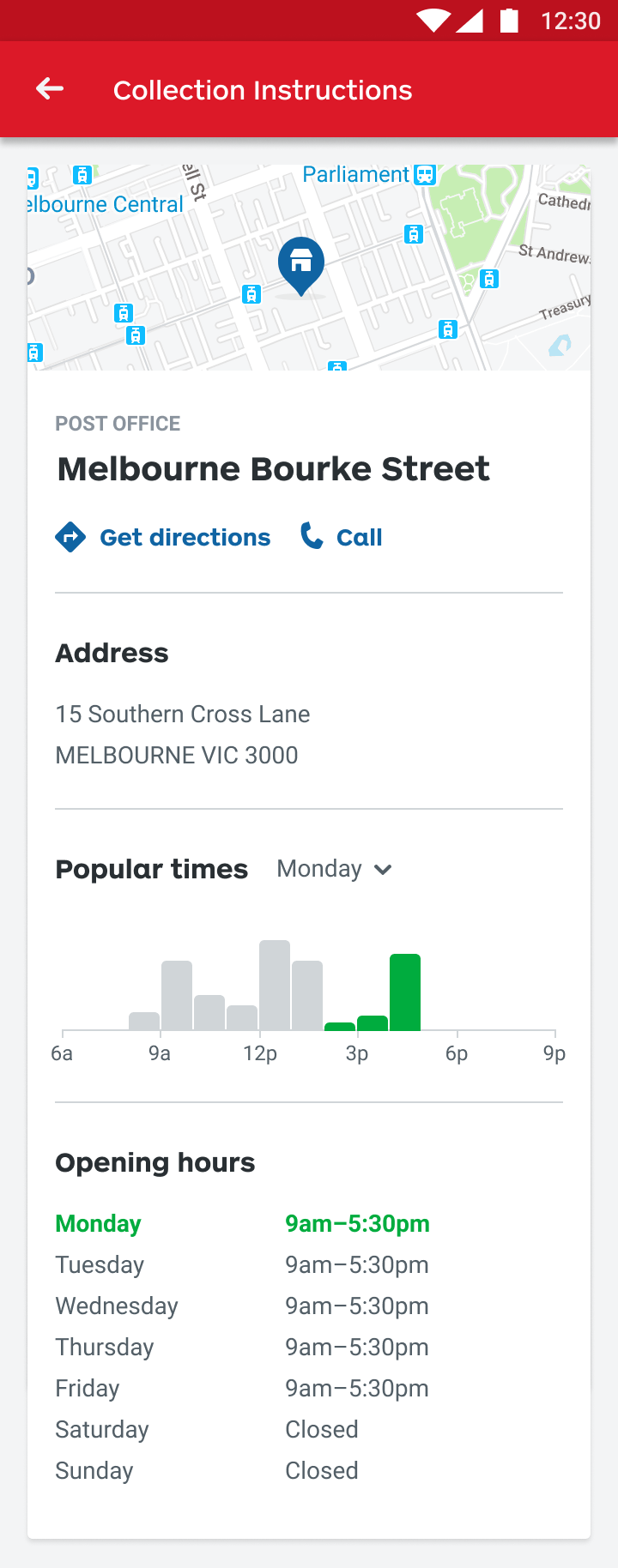
The outcome
Feedback for the project was positive and we received a commendation in the closing speech. Constructive criticism included that strong reliance on electronic matching meant that impact may be limited and that the retail integration was not holistic.
Ultimately, lacking a comprehensive study of the interaction between sender, receiver, the parcel-management system and retail, this is just one piece of the puzzle in improving the delivery experience. The research provides evidence that there is a problem, and the positive feedback indicates there is the seed of a great project in there.